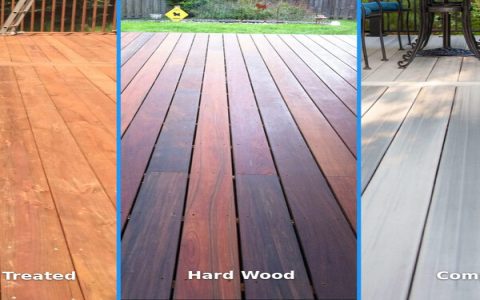Paint for Decks
Paint forms a thick, opaque film on the wood surface. It offers a wide array of color choices and can effectively hide imperfections in older wood.
- Appearance: Completely covers the wood grain, offering a uniform color. Available in virtually any shade.
- Protection: Provides a strong barrier against moisture and UV damage when the film is intact. Proper preparation and priming are crucial.
- Durability: Can last 5-10 years if applied correctly on a well-prepared surface. However, it is prone to chipping, peeling, and cracking, especially on horizontal surfaces subjected to foot traffic and standing water, as it doesn't allow the wood to breathe effectively.
- Maintenance: When paint fails, it often requires extensive scraping, sanding, and priming before reapplication. Touch-ups can be noticeable.
- Application: Typically requires a primer. Can fill small cracks. The surface can become slippery when wet.
Stain for Decks
Stain penetrates the wood fibers, rather than primarily sitting on top like paint. Stains are available in various opacities, from transparent to solid.
- Appearance: Transparent and semi-transparent stains enhance the natural wood grain and texture. Semi-solid stains offer more color while still allowing some grain to show. Solid color stains look similar to paint in hiding the grain but are generally thinner and allow more wood texture to remain visible.
- Protection: Protects wood from within against moisture and UV rays. Allows wood to breathe, reducing the risk of issues caused by trapped moisture.
- Durability: Lifespan varies by type and exposure: transparent (1-2 years), semi-transparent (2-4 years), semi-solid (3-5 years), solid (3-7 years). Generally less prone to widespread peeling and chipping compared to paint on deck surfaces.
- Maintenance: Reapplication is typically easier, often requiring just cleaning and recoating, especially for penetrating stains. Solid stains, if they start to fail, may require more prep similar to paint.
- Application: Wood preparation is crucial as imperfections may show through, especially with more transparent stains. Some stains are self-priming. Generally less slippery than paint when wet.
Key Differences Summarized
- Surface Interaction: Paint creates a surface film; stain (especially transparent/semi-transparent) penetrates the wood. Solid stains form a thinner film than paint.
- Wood Grain Visibility: Paint hides grain completely. Stains range from showcasing the grain (transparent) to largely obscuring it (solid).
- Failure Mode: Paint is more prone to peeling, chipping, and cracking. Penetrating stains tend to fade or wear away. Solid stains can peel if over-applied or if moisture is an issue.
- Reapplication Prep: Repainting often requires extensive scraping and sanding. Restaining (especially non-solid types) usually involves cleaning and reapplying.
- Moisture Management: Penetrating stains allow wood to breathe, reducing moisture-related problems. Paint can trap moisture if its barrier is compromised, leading to rot and peeling.
- Texture & Slip Resistance: Paint can create a smoother, potentially more slippery surface. Stains generally maintain more of the wood's natural texture.
Making Your Choice: Paint vs. Stain
Consider these factors when deciding:

- Condition and Age of Wood: Paint or solid stain can be better for older, weathered wood with many imperfections to hide. Transparent or semi-transparent stain is ideal for new or well-maintained wood where you want to showcase the natural beauty.
- Desired Aesthetic: For a bold, uniform color and to completely hide the wood grain, choose paint or a solid stain. To enhance natural wood grain, opt for transparent or semi-transparent stains.
- Maintenance Commitment: If you prefer less frequent but potentially more intensive recoating when failure occurs, paint might be considered (though its failure on decks can be problematic). If you prefer easier, more frequent maintenance, a penetrating stain is generally better.
- Previous Finish: If your deck is already painted, repainting is usually the easiest path unless you're prepared for complete stripping. If stained, you can typically restain (with the same base, e.g., oil over oil) or prepare the surface for a solid stain or paint. Moving from paint to stain requires complete removal of the paint, which is very labor-intensive.
- Horizontal vs. Vertical Surfaces: For horizontal deck floors, stain (especially penetrating types) generally performs better due to wear and moisture. Paint or solid stain can be suitable for vertical elements like railings, posts, and balusters.
For deck flooring, stain is often the preferred choice due to its penetration, breathability, and more graceful wear pattern. For vertical deck components, both paint and stain can be viable options depending on the desired look and maintenance preferences.










